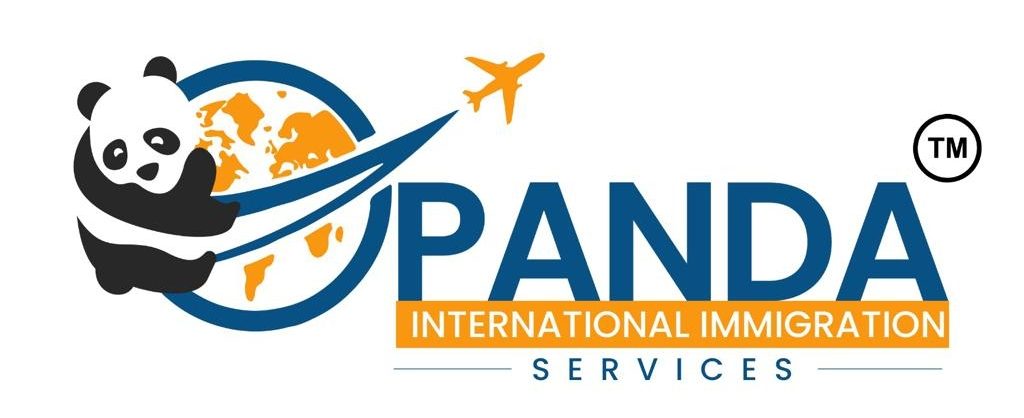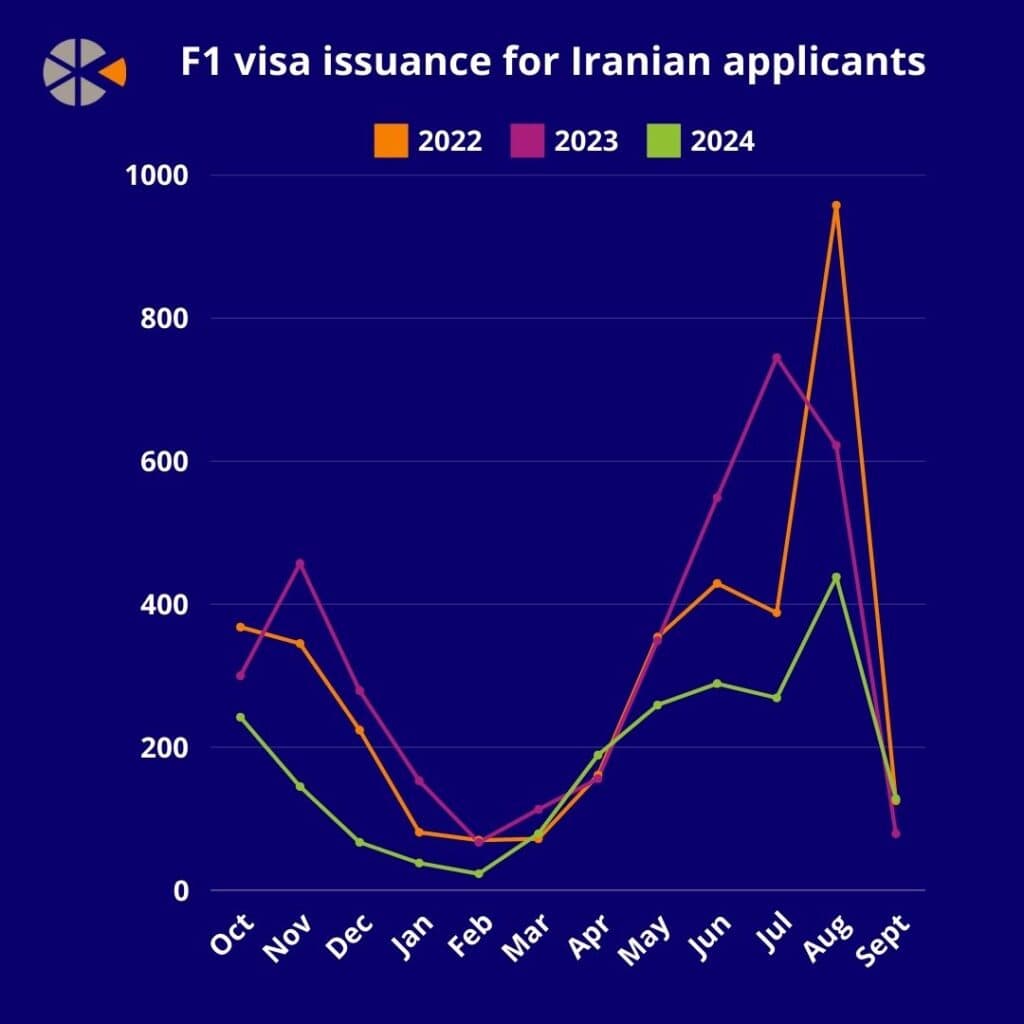Analysis of US state department data has revealed a significant drop in F-1 visa issuance for Iranian students in 2024, with some students reportedly spending over $3,700 in application and associated visa costs.
In fiscal year 2024, the total number of F-1 visas issued to Iranian students fell by 42% compared to the average total for the previous two years, according to US government data.
Nearly 3,900 F-1 visas were issued to Iranian students coming to the US in FY 2023, as compared to 2,166 in FY 2024 finishing at the end of September, the data reveals.

Total annual F1 visa issuance for Iranian applicants:
FY 2022: 3,575
FY 2023: 3,869
FY 2024: 2,166
Iranian academics have rallied against the decline in F-1 visa issuance for Iranian applicants, establishing the Iranian Applicants F&J Visa Movement to investigate what they claim is a politically motivated exclusion of Iranian students in the US.
“It appears that the State Department has employed an avoidance strategy to deny Iranian students’ right to education [in the US],” Iranian academic and English language teaching researcher involved in the movement, Barbod** told The PIE News.
“We wholeheartedly believe that they squeezed the visa quota in 2024 due to political reasons… not only do they impose sanctions on the Iranian government, but they also restrict F and J visas for Iranian students,” Barbod claimed.
But the US government has poured cold water on these claims.
According to a State Department spokesperson, “The refusal rate is a product of millions of individual decisions made every day by our consular officers around the world. These officers receive rigorous training on applying visa law and regulation before they reach their posting overseas.
“Because so many factors influence each visa adjudication, there is no one reason why a refusal rate goes up or down.”
Furthermore, while new enrolments have decreased, according to new Open Doors data, Iranian students in the US totalled 12,430 in 2023/24 – a 15% increase on the previous year and the fourth largest rise of any country.
Though seeming to contradict the decrease in new visas granted, the rise could be explained by an increase in Iranian graduates staying on in the US for OPT work opportunities, which drove the overall record-high numbers of international students in the US.
Iranian Applicants Visa Movement
In response to declining visa issuance last year, the group of academics established a Telegram group of F and J visa applicants. They collated data about the courses, institutions and embassies where students’ applications were rejected, as well as visa processing delays and the time and money spent by prospective students.
Since the closure of the US embassy in Tehran in 1979, there has been no US diplomatic presence in Iran and prospective students must schedule visa appointments at US embassies or consulates in neighbouring countries such as Turkey, the UAE or Armenia, making visa processing and wait times difficult to record.
Under regulations from the US Office of Foreign Assets Control (OFAC), Iranian students are permitted to apply for non-immigrant visas to attend academic institutions in the US, though there are some restrictions on research collaborations.
The refusal rate is a product of millions of individual decisions made every day by our consular officers around the world
US State Department
In October 2024, the Iranian applicants’ movement disseminated a survey among the applicants. Of the 402 students on the Telegram group, 79 individuals responded about their experiences.
The results found that of the rejected applicants, 53% were PhD students, 37% were master’s students and 5% were post doctorate researchers.
The largest proportion of applicants (40.5%) travelled to Yerevan, Armenia, for their visa appointment, followed by Dubai, UAE, and Doha, Qatar, which received 15% and 14% of students respectively.
The survey recorded students’ scholarship status, revealing that 54% had fully funded scholarships, 20% had partially funded scholarships, and 18% were self-funded.
Spanning a wide variety of degrees, the postgraduate students and researchers had been accepted to institutions including UMass Boston, the University of Illinois and the University of California Merced.
Cost & wait times
Of the 79 respondents, many applied for a visa more than once, with 68% attending a second appointment and 22% a third.
Four students attempted a fourth time, and two students had five unsuccessful visa interviews, spending an estimated total of more than $3,700 on travel costs, visa appointment fees and currency transaction fees.
On top of accommodation and travel fees to US embassies in neighbouring countries, F and J visa applicants must pay a $185 MRV fee for each consulate interview, as well as a $350 SEVIS fee that is valid for one year.
Due to global economic sanctions, Iran’s currency has the second lowest global worth, with each applicant paying an estimated additional $200 in transaction fees for each visa appointment.
Administrative Processing
According to the academics, many of the applicants have been waiting in Administrative Processing (AP) at US embassies, putting their academic plans on hold.
An applicant is placed in AP in situation where a consular officer determines they need more information about an application, placing the applicant in AP for an indeterminate period.
According to the Iranian Applicants Movement, 30 students have been waiting for their visa clearance since 2022 and 160 students have been waiting since 2023, though these figures have not been independently verified by the individual applicants.
The Trump administration
Since Trump reassumed the presidency on January 20, a “tsunami” of executive orders have been unleashed, threatening to reshape the immigration system and radically alter the face of US international higher education.
Despite these, as well as Trump’s hardline stance against Iran seen in his policy of “Maximum Pressure” on oil exports, Barbod and his colleagues remain hopeful that the administration might take a more positive stance towards Iranian students.
This optimism is, in large, driven by secretary of state Marco Rubio’s comments in which he made a distinction between the people of Iran and their government.
“I hope he will understand our grave concern and facilitate the process of Iranian student visas,” said Barbod.
Barbod also pointed to Elon Musk’s campaign trail comments on X, formerly known as Twitter, maintaining that “America has benefitted from an influx of talented Iranians”, while acknowledging the highly unpredictable nature of the current administration.
** Real names have been changed
The post Iranian academics rally against US student visa denials appeared first on The PIE News.


